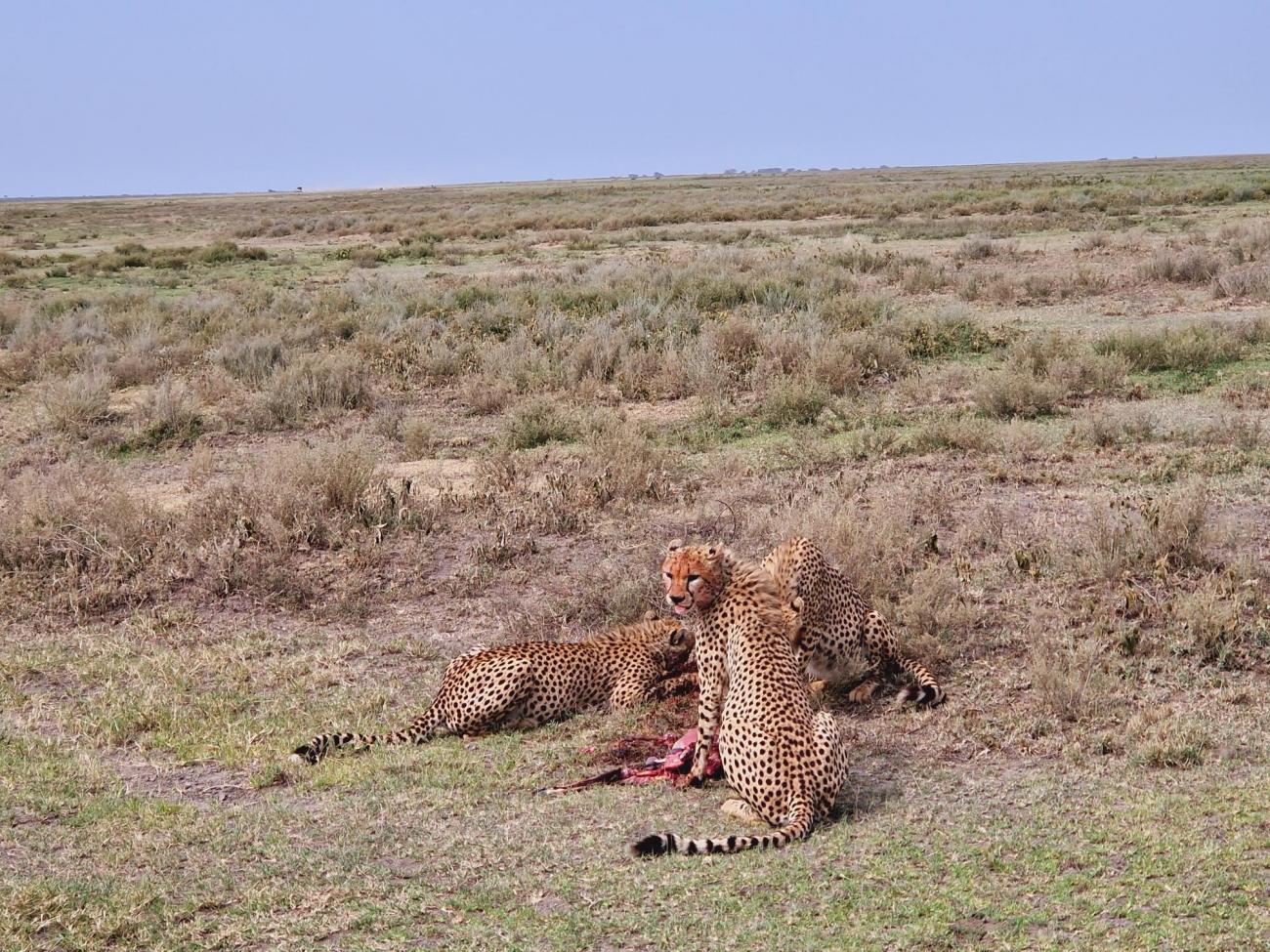Bush Rovers of the Serengeti
This trip to Tanzania has been a long time coming.
At a charity event at the Royal Geographical Society in November 2019, I bid – and rather unintentionally ‘won’ – an eight-day safari in Tanzania. What made me stick my hand up – except of course wanting to help elephant conservation – was that the prize was offered by Bush Rover, a brand I’d known for a long time, offering an experience I’d longed to try… namely getting a front row seat to watch the wildebeest migration.
But then of course Covid struck, and, as I suspect like many of you reading this blog, we had to postpone the trip, from 2021 to 2022 and finally to Feb 2023. And so here we are almost three years on and finally, I am in Tanzania.
Has it been worth the wait?
Flying down from Ethiopia, we first spent a couple of days at a camp on the shores of Lake Victoria, birding and visiting local fishing communities, before doing a full day’s game drive through the Serengeti to the Bush Rover Camp. Set up on the edge of a stunning lush plain, five kilometres wide and two kilometres across, teeming with wildebeest, zebra and impala, was a mess tent – divided in two, with one half for dining, the other for relaxing – and the famous Bush Rovers Land Rovers.

Of an ingenious design, each of the six Land Rovers at the camp offers two-story accommodation with a bathroom, shower area and loo on the ground floor and a bedroom, dressing area and balcony on the first floor. Run entirely independently from each other with solar panels offering ample electricity and hot water, they are totally environmentally friendly and when the wildebeest move on, so do they, leaving nothing whatsoever behind but the bush. Coming to the end of the spring season, four of the Land Rovers had already been relocated, close to the Mara River where the wildebeest will emerge after the long rains. With our wonderful guide Masoud in the other Land Rover, we had the place to ourselves.


And this private location offered the best way to see the migration. Uninterrupted by any other tourists, in what felt like a private concession, we often didn’t have to move at all with the game coming to us. As well as the ubiquitous wildebeest, eland, giraffe, zebra and warthog, packs of hyenas, a herd of elephants and three hunting lions roamed in front of our camp. It was like staying in our own Jurassic Park.

And when we did venture out on game drives we saw even more: three cheetahs stalking their pray one evening (we didn’t see the kill, but we did see them eating it the following morning), more lions, buffalo, gazelles, more hyenas and a plethora of wonderful birds; my favourite being the long-legged secretary birds, the beautiful lilac-breasted roller and the ginormous griffon vulture. With the wildebeest having only recently calved there was abundant food for the predators and plenty of carcasses for those that preferred their prey already dead. It was a great time to visit.

From here we flew to the coast to spend a few nights in a wonderful, deserted lodge on the Indian Ocean and we are now finishing our trip on the old spice island of Zanzibar.

Safaris, particularly ones that offer exclusive access to the game through camps with low numbers of guests, can be eye-wateringly expensive. Bush Rovers is a great way to experience the best kind of safari in a way that won’t break the bank.
This trip was three years in the making – but was it worth the wait? It certainly was.
